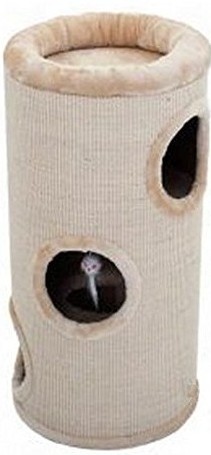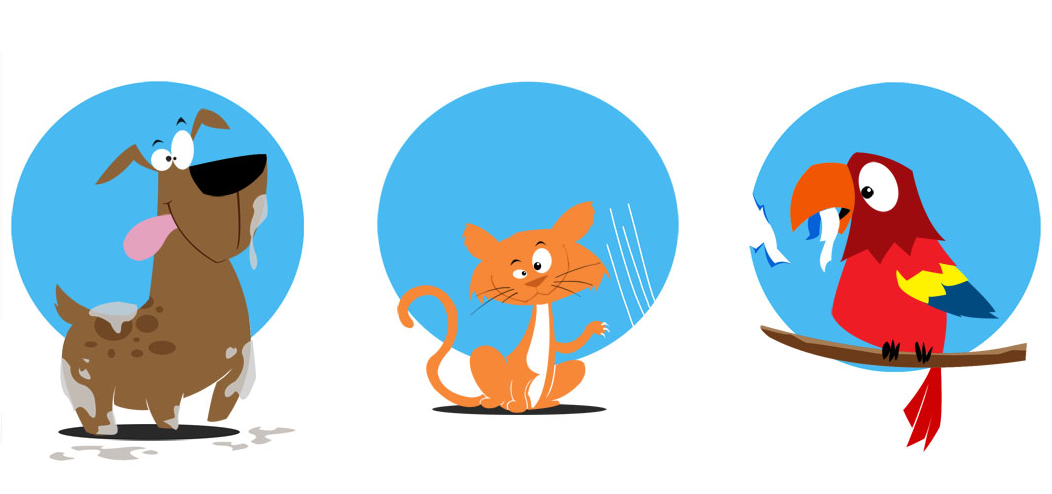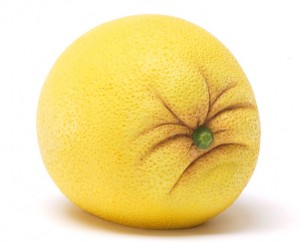Revised August 2022.
Destructive behaviour from your beloved pet can be a nuisance. Assuming there’s not an underlying medical condition or the behaviour isn’t anxiety-related, let’s look at some ways of addressing these types of behaviour, regardless of whether you’re a dog dude, a cat gal or a parrot person.
Or hang out with any other critter, for that matter.
I’m going to use cat furniture scratching as an example in this post, since I had to address that behaviour very recently.
In cats, scratching serves the purpose of sharpening the claws, territorial marking and defensive behaviour.
So far so good.
It’s when kitty chooses to sink her claws into the pristine vintage sofa that interests collide.
Before all you non-cat people zoom out: this intro serves to emphasize that what may be a problem to you, could actually serve some purpose to the animal.
And problem solving is often about finding other ways for the animal to achieve that purpose.
What to do? First of all, I would advise against punishment, such as spraying water at the cat (which is often suggested in various online forums).
Why? There are several reasons.
- The cat needs to perform scratching.
- She’ll likely just continue clawing when you’re not around – or shift her attention to the matching pristine vintage foot cushion.
- Punishment often has side effects such as aggression or fear, and potentially damaging the relationship between the pet and the person.
So, what alternatives are out there?
The quick-fixes
Declawing is a type of amputation, ethically questionable, and is illegal in many countries under laws against cruelty to animals. Also, declawing often leads to medical complications and behavioural problems such as increased house soiling and biting tendencies.
Puh-lease don’t go there.
A more humane alternative would be gluing nail caps on to the cat’s existing nails to reduce destructive effects of furniture scratching behaviour. However, the application procedure (which needs to be repeated every 4-6 weeks) might be aversive to the animal if he’s not trained. Also, even correctly applied caps might alter the animal’s gait – not to mention the problems associated with incorrectly applied caps.
I haven’t seen any cats wearing caps, so I don’t know if and how their scratching behaviour is affected, but that would also be a concern for me.
On another note, I’d avoid such a solution for cats that defensively scratch people, as that may solve only the human’s problem, but not the cat’s problem. A topic for another post, as such behaviour is probably anxiety-related.
Personally, I’d go for the solution that’s more fun for everybody, teaches the animal something and improves the relationship between the guardian and the pet:
Behaviour management solutions
Today, I want to share the combined approach I used to solve my scratching situation:
- Teaching an acceptable behaviour,
- Making the unacceptable behaviour less attractive, and
- Arranging the environment.
Let’s have a look at those three approaches.
Teach an acceptable behaviour
OK, so the exquisite sofa is off limits.
Solution: find an alternative that’s at least as attractive.
In my case, we were cat-sitting and our guest decided that she’d either use our living room carpets (downstairs) or the bed (upstairs) for her claw maintenance.
In this film, you see some of the training that I did to teach her to scratch a scratching barrel (that she initially profoundly ignored) rather than the bed or carpet. It didn’t occur to me to film it while I was training it, so later I took out the camera and filmed a few sessions repeating things she’d already learned.
The training sequence looked like this (yes, the target is a butter spreader, a piece of plastic that I grabbed in the kitchen).
- Conditioning to the clicker (clicks mean treats are imminent)
- Teaching the nose-target (getting clicks and treats for touching the target with the nose)
- Generalizing the nose-target (moving to touch the target)
- Switching to paw-target (swatting to touch an out-of-nose-reach target)
- Generalizing to the scratching post (swatting on and then next to target placed on scratching post)
- Stationing the scratching post in target locations. Our guest scratched on waking, so the scratching post needed to be right next to the bed. We found out the hard way that if the scratching post wasn’t there, she lazily chose to do the morning scratch routine on the bed.
- Behaviour maintenance training was not needed since the sisal scratching post was preferred to the bed/carpet, and the behaviour of scratching is rewarding in and of itself (self-reinforcing is the nerd term).
OK, non-cat people, how can you apply this to your pet? Could you use target training to teach an acceptable behaviour?
If your dog can’t dig in the garden, can you think of somewhere else where it would be OK? Can you think of an appropriate alternative, that is at least as attractive to the animal?
Make the unacceptable behaviour more difficult or unattractive
Restrict access to areas you want to preserve. Close doors, put attractive objects away – don’t let the animal get unsupervised access.
Generally speaking, the more the animal has rehearsed the unwanted behaviour, the more difficult it will be to change.
For the scratchy-cat I made the unwanted behaviour less likely by making the off-limit scratching surfaces unappealing through a change of texture. In the case of cats, they prefer sharpening their claws on certain textures. By changing texture, we may change the motivation to scratch in that particular location. For instance, covering the inappropriate scratching areas with a cloth for a while – we used an old sheet. The Sticky Paws scratch control strips get mixed reviews, some people like them, some not; for some they don’t deter the scratching, and leave sticky residue on furniture when removed.
Cats often dislike citrus smells. An option often suggested is to use a lemon spray on off-limit-areas to reduce their attractiveness. Using deterrent smells is an approach that I’m not all too keen on for two reasons:
- The bad smell would annoy the cat even if there is no misbehaviour, and
- I wouldn’t know at what distance the cat could perceive it.
I wouldn’t want my innocent cat to have to avoid her favorite resting spot because the oblivious human can’t perceive that terrible smell originating from the off-limits sofa a few meters away.
The idea behind using deterrents is to create contrast: the off-limit site smelling so bad that the cat will choose another site.
But contrast need not be from nasty to neutral, it could be from neutral to nice, too!
Some cats go crazy over catnip and rub and scratch at the smell: try this for the scratching post instead.
The off-limits site doesn’t have to smell bad if the scratching post smells good. The contrast between the options will likely influence her decision!
Simplify the right choice

The animal is making a choice. “Should I dig my claws into the pristine sofa, or the sisal scratching post?”
You can help her make that choice by setting up the environment.
Setting up the environment means both facilitating the desired behaviour by placing attractive scratching posts where they are needed (such as nearby when waking up), making sure they smell enticingly.
Setting up the environment also means changing the accessibility / texture of the unacceptable scratching objects, at least until the desired behaviour is an established habit.
The animal is making a choice – our task as trainers is to make the right choice obvious, simple, and rewarding (nerd term: reinforcing).
Other species, other behaviours – same principles
The line of thinking is the same regardless of species, but the details will be different.
Is your dog digging up the back yard, or your parrot chewing through all your paneling? Assuming the behaviour isn’t anxiety-based or due to a medical condition, consider these three questions:
- How can you offer acceptable alternatives that are at least as attractive as what the animal is currently doing?
- How can you make the unacceptable behaviour more difficult or unappealing, without resorting to punishment?
- How can you help make the right choice more obvious, easier, and more rewarding?
Behaviour management solutions may not be quick fixes, but they work, improve relationships and empowers animals – and owners.
Eager to learn more about how to address a whole range of unwanted behaviour in the animals in your care? Check out my extensive online course Resolving Challenging Behaviour!
***
I teach online courses about how to get happy animals that thrive with humans. Wanna know when any of them are available? Just sign up below, and I’ll also keep you posted on when I give free webinars, masterclasses, silly experiments – or publish a new blog post.
Tucker & Tucker (1988). Catnip and the catnip response.





Our dog scratches the landing carpet in the night. I think she’s making a bed. She has comfy blankets and access to all rooms. How can I redirect this behaviour?
Sometimes animals do things, and it’s hard to figure out the why. And she might be making a bed… But could it be something else? Does that particular carpet have a smelly stain? What happens when she scratches, does she get attention, to go outside? Often we need to take a step back and understand the context to fully understand the behaviour. Specifically, what triggers it – in which situations does it occur, and what happens immediately afterwards? So, what function does the behaviour serve to her? “if I scratch the carpet, mom comes and gives me attention” or “I’m a bit understimulated but this carpet sure smells interesting…” If you do some detective work you might find out what that is – and then it will be easier to find the solution. best of luck! 🙂
Do you have any suggestions for a dog that came into the home during the covid isolation and now the people are going to work and school and he’s tearing the place apart!
Sounds very challenging! That may be due to a number of different reasons – he may be bored, frustrated, reactive or anxious. In order to help him, you need to figure out which one it is. Behaviour consultants can help with this! Here are a couple of resources:
https://malenademartini.com/
https://www.subthresholdtraining.com/about/
Best of luck!
My dog hates having her nails trimmed. I got an idea about using environmental reinforcement from a bird trainer. When we go out in the car for a walk I take clippers. I let her start watching and smelling the environment from the car. She hardly notices me going near her feet to clip her nails. I clip one nail then release her from the car with a treat. Then ask her to get back in, start sniffing the air and clip another. It works so well. I only do one foot per session to make sure she doesn’t get stressed. It is also better for me as I can see better as it is natural light and it is an easier height than being on the floor.
That sounds like a great technique, especially if you can keep her under threshold and in SEEKING mode all the time! I wouldn’t call it environmental reinforcement, though, but rather overshadowing. In other words, it’s not related to operant learning but classical conditioning and relative stimulus strenght: in that environment, all the distracting stimuli are so powerful that the clippers fade to insignificance…
I am working on training a dog for my disabilities, and a clicker would be a good idea for that, lol. He is now four, and generally well behaved. He does, however, have a bad habit of jumping up on everyone, and doesn’t like having his claws clipped. I think it causes him a lot of discomfort, and even pain because he screams like he is being murdered if you clip even one claw. I am going to try filing his claws next… I won’t know the result of that until I try it. I am looking forward to finding out what his reaction will be. In the meantime, I will be taking him to a groomer in town for nail clipping… And hope he doesn’t scream like he’s being tortured. Any suggestions?
Hi! I’m not a dog owner myself, but I’d be careful in my selection of groomer and try to find one who is interested in Low Stress Handling. A small issue could easily turn into a Big Problem down the line if he is handled roughly.
As to the jumping, try teaching him an appropriate behaviour instead when he wants to say hello to people, such as all four paws on the floor. When he does that, click and treat, and cuddle him (if he likes that). If he jumps, ignore. He’ll learn that jumping doesn’t work to get attention, but 4-on-floor does.
Good luck! //Karolina
Hi Sandy! The solution for me was an Oster Cordless Nail Filer, lots of treats and patience. I started with the machine off, rewarding the dog for touching it with his nose. With the motor running I repeated the process. A few days later I only touched one claw with the file. When I was confident that he could handle it, I touched more than one claw during the session. After some more days, I could actually file a little, allways rewarding after each claw. The nice thing is thatr you have much more control than with a clipper. It’s almost risk free. I must add that I have a dog who used to be very fearful. One might say he is a rescue dog: He was returned to me by the family who bought him because they were unable to keep him due to healt issues with one of their children. I don’t know much about how he was treated during the five months he spent with the family. I can only guess. The first time I tried to trim his coat, he bit me. Paws and claws were strictly off limit as well. In addition, he had some resource guarding issues. The story could have ended there, but it didn’t 🙂 With positive reinforcement, lots of play, building trust and confidence, and bonding, I today have a dog that is very relaxed and confident in most situations.
Here’s a video that shows how to file the claws with a similar machine to the one I have.
https://www.youtube.com/watch?v=7cq5X8aV95E&t=33s&index=2&list=FL1P_wB0y0yYVGn_22fVdzdg
Kikopup (the lady) has videos showing how to train your dog to not jump up on people. Good luck!
//Per
thanks for sharing! 🙂